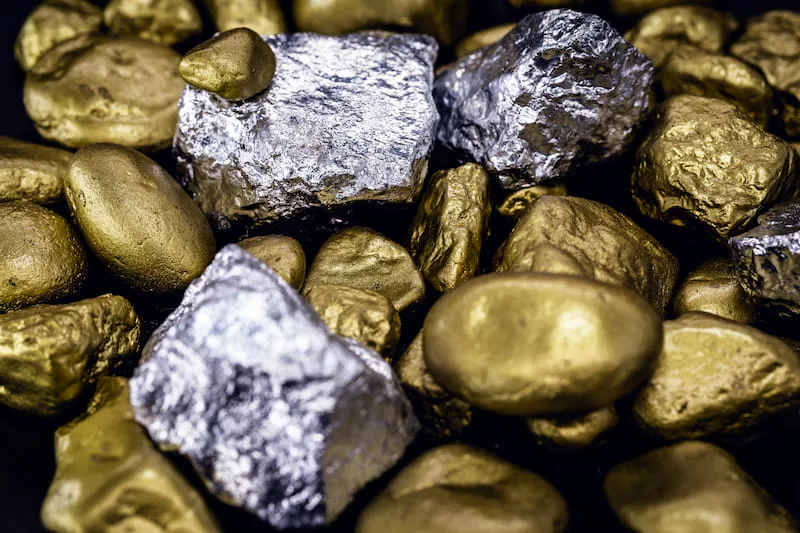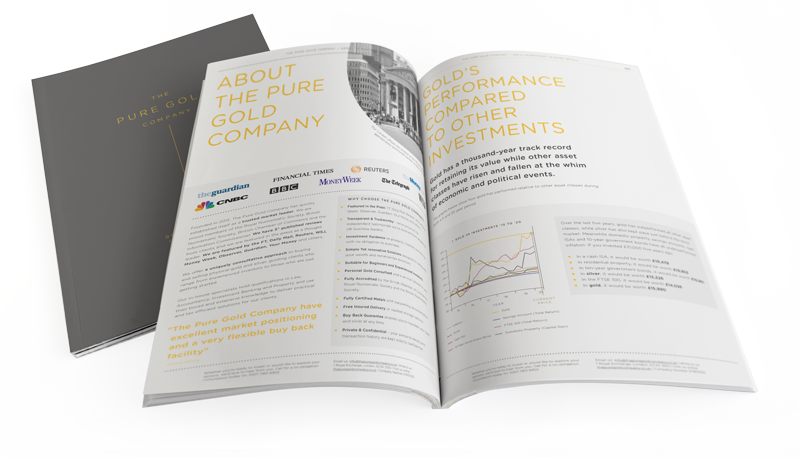Silver has always lived in the shadow of its more popular and more expensive gold cousin. Value is a key part of this imbalance – gold is rarer which makes it more expensive. Yet silver remains an important precious metal, traded for centuries as currency, used in jewellery, as an investment and more recently in technology. So, is it silver’s time to shine?
Gold & silver similarities and differences
It’s hard not to compare gold and silver instead of just looking at silver on its own merits. The two metals are inextricably linked by their venerable history as revered precious metals, have been used as currency for centuries and hold their value over the long term. Both silver and gold are ways to diversify your investment portfolio, offsetting the risks posed by stock market upheaval.
But if they share so many traits, why is gold trading at almost £1600 an ounce and silver at a fraction of that (£19 an ounce)? The key reason gold has always traded at a higher price than silver is it rarity. According to the US geological survey 1.74 million tonnes of silver has been discovered to date, compared with 244,000 metric tons of gold. While gold mining is its own end, silver is often produced as a by-product of mining for other minerals like copper, lead and zinc.
The gold/silver ratio
While gold has always been more valuable than silver, the difference in their relative prices remained fairly stable for hundreds of years. The so-called gold/silver ratio describes the number of ounces of silver required to equal the value of an ounce of gold. For several hundred years it stayed within a tight range of between 9 and 14 before the ratio widened substantially in the 20th century. In the last 20 years, the ratio has been as low as 31:1 in 2011 and as high as 115:1 in 2020.
Why does it matter? Many silver investors believe the gold/silver ratio gives an indication of how over or undervalued silver is. Having spent hundreds of years in the low double digits, some investors think the more recent spikes are an anomaly and the silver price will rise to reflect its truer value. At the end of September 2023, the ratio stood at 81:1, well above the centuries-long average but some way below its recent high.
Download our investor guide
Discover how physical gold and silver investment could protect your wealth and pension. Get started today with our Free Investors Guide.

What affects the silver price?
Whether or not the gold/silver ratio is your preferred reference point for silver investment, it’s still essential to understand what affects the supply and demand for silver.
The bulk of the gold produced annually goes into investment and jewellery, and while silver also derives demand from these areas, industry accounts for over half of silver demand. It is a highly conductive metal and is used in a very wide variety of industrial applications including in electrical and electronic devices, plasma TVs, LED lights, medical equipment, batteries, solar panels and many more products.
The preponderance of industrial demand means silver’s fortunes are influenced by the cycles of the global economy. When there is a slowdown in growth, industrial demand falls and that can impact the value of silver. But this simple view doesn’t take into account the strength of investment demand or the fashion for silver jewellery which can equally wax and wane on a whim.
Market Volatility
The multitude of demand levers is one reason silver is usually more volatile than gold. Changes in industrial demand can have a big impact on the silver price, as can demand for investment. Despite industry accounting for more than half of silver demand, silver remains a commodity and is also impacted by changes in market sentiment, inflation, interest rates and currency.
Silver also operates in a smaller and less liquid market, with lower trading volumes and fewer buyers and sellers. This illiquidity exacerbates volatility, as any changes in demand and supply have a disproportionately large impact on value.
The smaller market makes it easier for speculators to manipulate the price, as was evident in 2021 when small-time traders, responding to a call to action on social media, began to buy up silver in a bid to challenge what they saw as prices kept artificially low by hedge funds. The surge was brief but did serve to demonstrate the volatility of the precious metal. It is unlikely a concerted effort on behalf of social media pundits would move the dial on gold in such a headline-grabbing way.
Some investors appreciate the volatility of silver and use it to their advantage. But this short-term strategy is very risky and is really only suitable for very experienced investors with a high-risk appetite.
Is now the right time to buy silver?
For investors looking to use silver in the same vein as gold – as a long-term store of wealth, providing diversity in a portfolio – while also appreciating that silver offers a lower entry price point than gold, then silver is a perennial investment option.
The Silver Institute expects silver demand to remain strong in 2023, with industrial demand potentially reaching all-time highs, following on from strong growth in 2022. With demand underpinned by industry, silver is likely to retain its safe-haven precious metal status, rising and falling on short-term volatility but growing over the longer term.
Actual forecasts vary widely, with some banks bullish and others more cautious about what the silver price will do. Citigroup said in May the silver price could reach $30 an ounce over the forthcoming six to 12 months. Meanwhile, JP Morgan said in July that silver prices are expected to hover around $26 an ounce for the remainder of 2023.
The question is not when will silver outshine its more popular gold cousin, but rather how can investors use both commodities to diversify their portfolio and enjoy the lustre of long-term precious metal investments.


